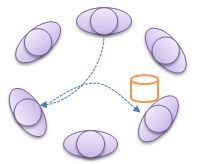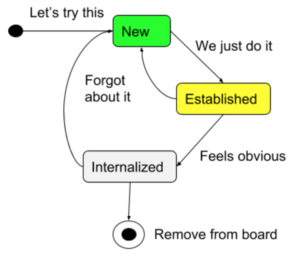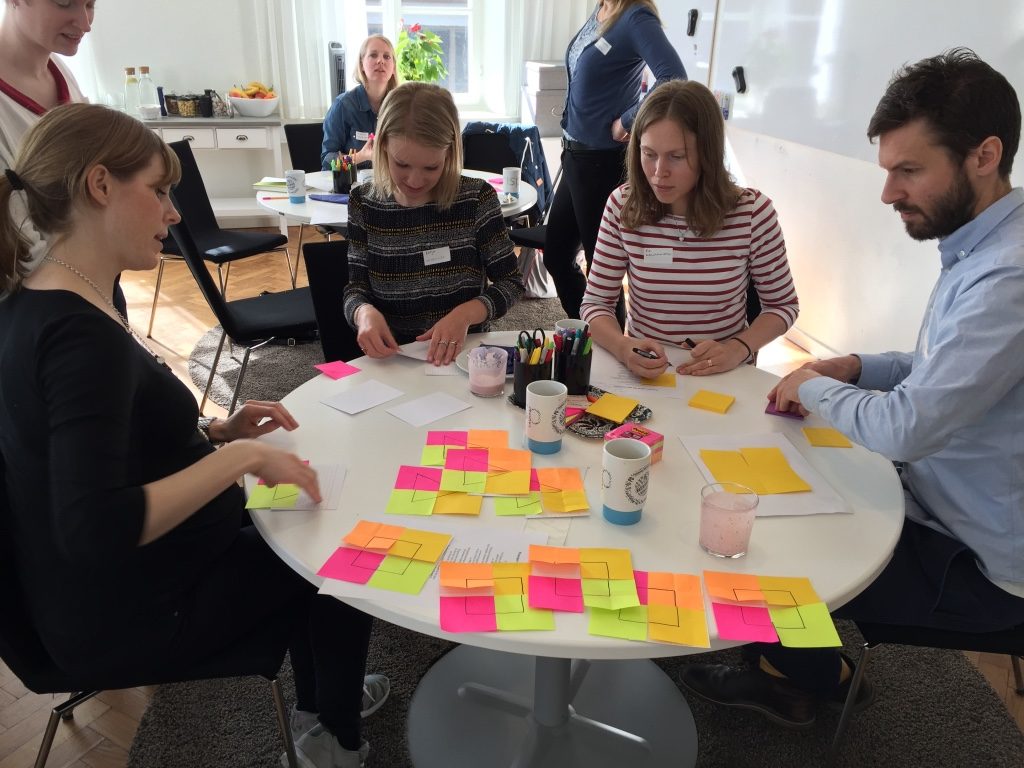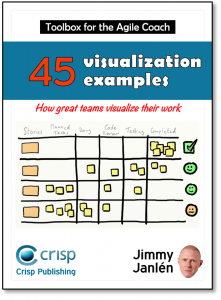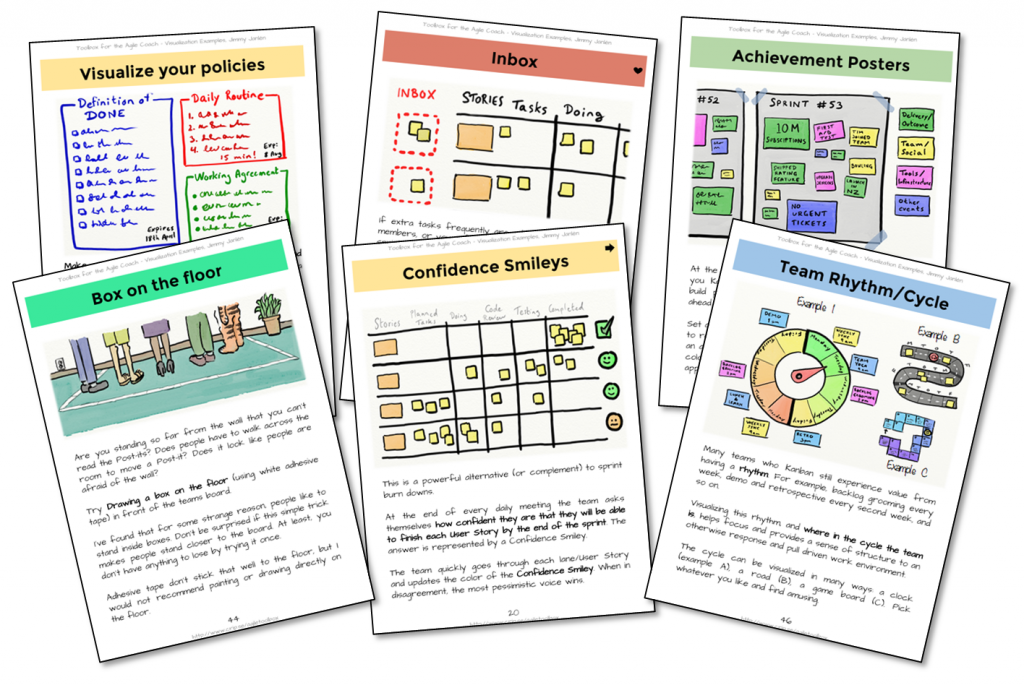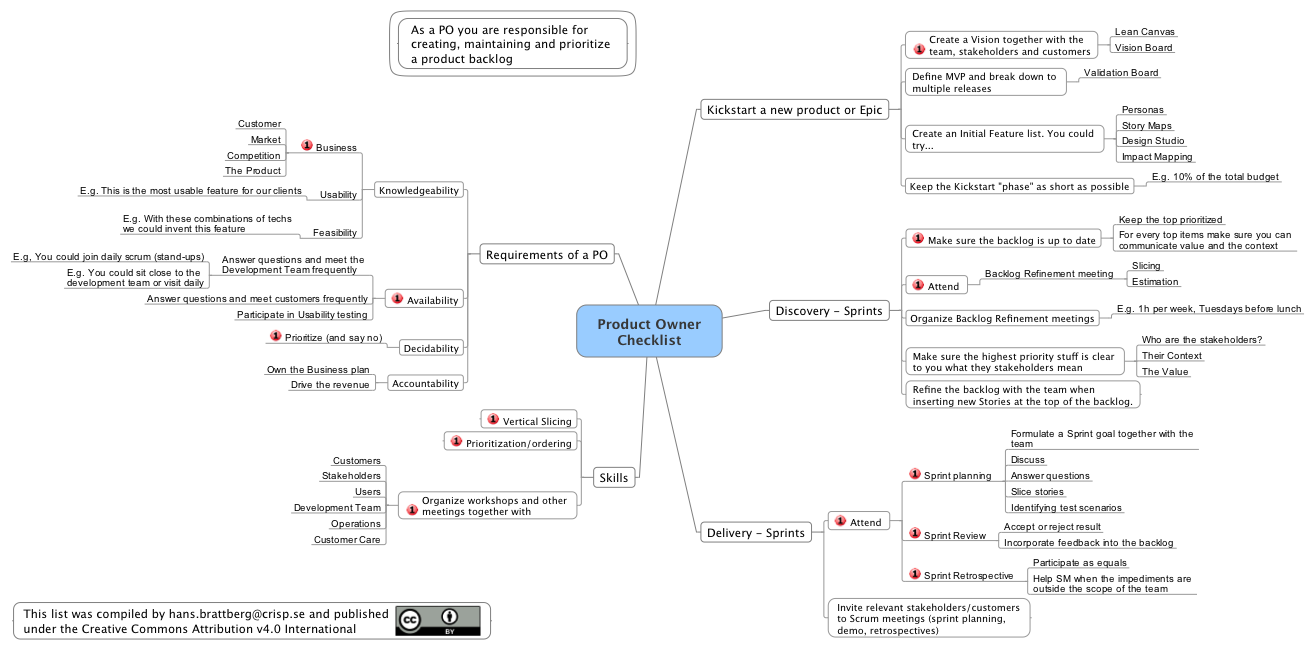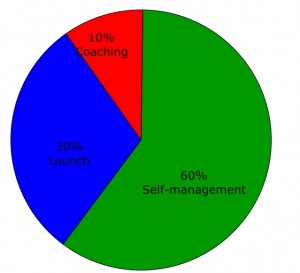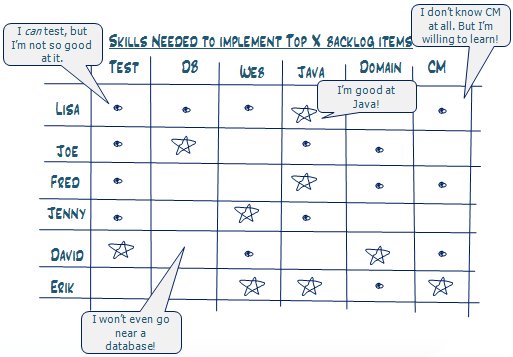Have you ever found yourself stuck in a meeting where one person does all the talking… and everyone else just tunes out? Or where it’s so open-ended that nothing really gets done? Even with smart people in the room, the best ideas often never get heard. That’s precisely the problem Liberating Structures were created to
Continue readingBootstrapping a Working Agreement for the Agile Team
I suspect that running a session with a team to help them bootstrap a Working Agreement, is the single most common workshop I’ve been facilitating the last couple of years. And I’ve learned a lot of what works for me (and what doesn’t work). In my experience, this approach works equally well for the agile team, the department management group and the steering board team. This blog is me documenting how I ended up facilitating these sessions.
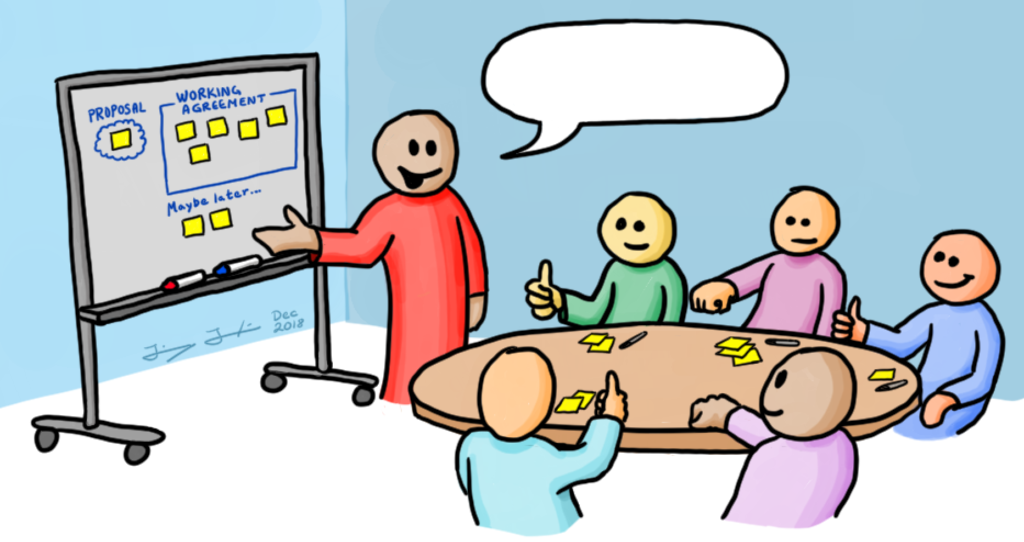
For me, a Working Agreement captures the expectations we have on each other within the team when we collaborate and communicate. I’ve seen teams call it “Code of Conduct” or “Ways of Working”. I call it Working Agreement. You call it whatever makes sense for you.
Running a Working Agreement workshop as early as possible is crucial for setting the team up for success. Preferably it’s done during the team’s two-day kick-off offsite, or at least within the first few weeks as a planned structured workshop.
The three states of working agreements
You may have read about this elsewhere, but a recent event led me to write this. I feel that the working agreements concept is not given the attention it deserves. Working agreements are about making your culture explicit. It is desirable to have them visualised on your Scrum board as a constant reminder. Question is, when do we remove them from the board so that they don’t cover the whole board? My answer is, when the third state is reached, “internalised”.
New book being written online – Facilitation tricks and techniques
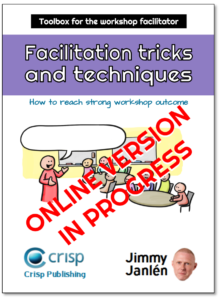 Last time I wrote a book (Visualization Examples) I decided to do it publicly online. That was a fantastic experience, which I also wrote a blog post about. It was great fun and I got tons of valuable feedback.
Last time I wrote a book (Visualization Examples) I decided to do it publicly online. That was a fantastic experience, which I also wrote a blog post about. It was great fun and I got tons of valuable feedback.
Now I’ve started to write a new book and I’ve decided to have the same approach. It’s currently titled “Toolbox for the workshop facilitator – Facilitaion Tricks and Techniques (How to reach strong workshop outcome)“.
The book is far from finished and it might take me another year to finish it. But I still want to invite you to read it now and to help me make the book even better.
Team Shapes – Simulating the challenges with component teams
A common pitfall for large and medium size organizations who are adopting Agile is to organize teams based on software component boundaries instead of feature teams. Some of the aspects of long term code ownership are more straightforward this way, but the negative consequences in terms of business agility and costs of coordination are huge. A few years back I designed a simulation exercise that I call Team Shapes which illustrates some of the issues and now I would like to share this simulation with the community.Continue reading
Fluent@agile – visualizing your way of working
Help your team improve by visualizing their way working with the fluent@agile game. With the game you can help a team find out where it is on its agile journey and help it find new ways of both fine tuning and make leaps in their daily agile practices.
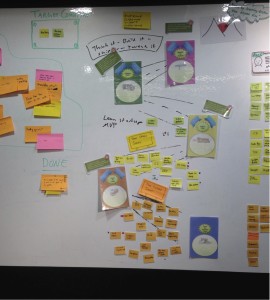
Me and Christian Vikström made the game together at Spotify during the spring 2014 when we were coaching and helping team to improve their agile skill sets and processes.
At Spotify the teams owns their own way of working. A team is basically only accountable to itself. We therefore needed an coaching tool that could help team take ownership of their self image and improvement strategy.
We also wanted the tool to be opinionated. It should be normative, tell what’s good and not, what kind of practices and behaviour that’s expected and not. But at the same time it should be open to new ideas, new practices and the teams local conditions.
Continue reading
New book: Toolbox for the Agile Coach – Visualization Examples, now available on LeanPub!
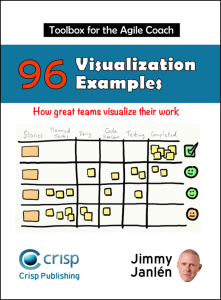 I’m happy to announce that Toolbox for the Agile Coach – Visualization Examples is now available on LeanPub! It’s a 124 page book cramped with visualization examples for teams on how to improve collaboration and communication, as well as shaping behaviours.
I’m happy to announce that Toolbox for the Agile Coach – Visualization Examples is now available on LeanPub! It’s a 124 page book cramped with visualization examples for teams on how to improve collaboration and communication, as well as shaping behaviours.
It’s been great fun to write. It’s been great fun to get feedback from early readers. It’s been great fun to show it to colleagues and friends. And now, finally, it feels awesome to be able to share it with you!
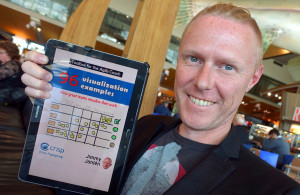 I planned to release the book in physical and digital form at the same time… but getting it printed have sadly taken forever, and I still don’t know when it will be available on Amazon.
I planned to release the book in physical and digital form at the same time… but getting it printed have sadly taken forever, and I still don’t know when it will be available on Amazon.
So, I’ve decided to go ahead and release the digital version first. Might be a stupid thing to do from a marketing perspective, but I don’t care about that. I want the book out and available 🙂
New book in the writing: Toolbox for the Agile Coach – Visualization Examples
Update: The book has since the publication of this blog been
made available for purchase at LeanPub.
A couple of weeks ago I published my new book ”Toolbox for the Agile Coach – Visualization Examples (How great teams visualize their work)” even though it’s still very much a work in progress.
I’ve made it public, thanks to persuasion from my colleague Hans Brattberg. I decided to try out Google Slides to make it easily accessible and to provide a simple way to give feedback. That turned out to be a great decision. The response has been overwhelming. There are at any given point 5-15 people reading the book, many of which provide great feedback, point out spelling correction and provides generous suggestion for more examples.
A Scrum Product Owner Checklist as a mind map
If you wonder what a Scrum Product Owner need to do, here’s the checklist (in form of a mind map) for you!
My Spotify tools
Last week i quit my assignment at Spotify. I was there to help and act as a stand-in for Joakim Sundén while he was on paternity leave. He’s now back in the saddle as Agile Coach in the More Than Music Tribe. I had the pleasure to work closely with the Agile Coach Christian Vikström on Spotify and together we have been coaching the Browse, Growth and Customer Support squads. A was also a member of the tribe management team, and together we did some new interesting stuff.
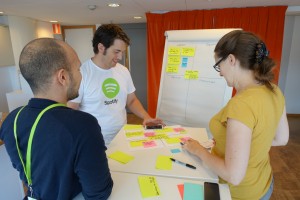
It’s has been fascinating and fantastic to work with such dedicated people and a product that has such a traction. Spotify is also really trying to build an awesome and agile organization and culture that can win and sustain in the long run. What is there to do at such a fantastic company? That’s a reasonable question. A lot I discovered. Spotify is shock full of super smart people, but many of them has not worked there for long, many of them has not worked long at all, teams have been newly formed and are under constant change. Simply put: even Spotify needs a lot of basic agile coaching.
When I now look back at what we did during these last 8 month I see a lot of tools and experiences that I think others also can find useful. During the next couple of month I will share them through this blog. Hope you will find them useful. Here’s the planned list:
Why I prefer ToDo over Trello for agile teams
The Gist
- ToDo has a flow. It knows about cycle times and about being DONE. Trello does not.
- ToDo has Planning Poker Estimates. Trello does not have any estimates.
- ToDo has automatic burn up charts. Trello does not.
- ToDo has swim lanes which groups cards by your dimensions. Trello does not.
- ToDo has Work-In-Progress limits. Trello does not.
- ToDo has upgrade possibilities to the full tool set of Projectplace. Trello has a bunch of plugins from different vendors of various quality.
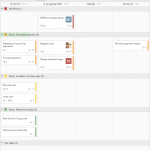
Already convinced? Sign up for ToDo by Projectplace! Want to know more? Read on.
Delagardrivet och upplevelsebaserat lärande
I juni kommer min kollega Jimmy Janlén och jag hålla kurs i deltagardrivet och upplevelsebaserat lärande. Vill vi hjälpa andra att upptäcka och praktisera sätt att skapa sant engagerande och lärande undervisning, presentationer och workshops. Kanske slipper ni då mina egen långa resa bort från katedern.
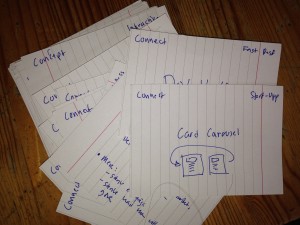
Så vitt jag minns det var jag 24, kanske 25 år. Jag och min vän Göran hade blivit inbjudna att hålla föredrag inför en större samling människor. Det hade jag aldrig gjort förut. Visst var jag van att prata inför andra människor, från seminarierna på universitetet till redaktionsmötena på vår lilla tidsskrift, men inte att hålla tal. Jag gjorde det som kändes säkrast. Jag skrev ett tal och läste sedan upp det.
Förutom att det tog jättelång tid att skriva talet, så kändes det inte bra att stå där och läsa rakt upp och ner. Visst försökte jag läsa med inlevelse och dramatik, ungefär som när man läser högt för barnen, men det kändes ändå inte bra. Höll inte åhörarna på att somna? Lärde de sig alls något? Det går att trollbinda en publik med högläsning, om man berättar en riktigt bra historia. Göran var bra på det, men inte jag. Något behövde jag göra annorlunda.
Role Expectation Mapping
Role Expectation Mapping is a series of workshop that explores, clarifies and establishes which expectations members of a group, team or project have on each other.
If you suspect that collaboration is undermined because of mismatch of expectations between people, then this exercise could boost the team’s ability to collaborate efficiently together. It is also a powerful way to jump start a new team and give them a structure to relate to.

People always have certain expectations on each other, behaviors, responsibilities, etc., but if those aren’t made clear and agreed upon among everyone – you are bound to have unconstructive conflicts, colliding agendas, difficulties in collaboration and things that fall between chairs.
Guest post by Christopher Avery: How to Get Smart People With Big Egos to Work Together
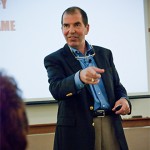 Christoper Avery, a leading authority on applying personal and shared responsibility for agility and performance, returns to Crisp in Stockholm April 29-30, 2013 to teach his public workshop Creating Results-Based Teams. Space is limited. Register now.
Christoper Avery, a leading authority on applying personal and shared responsibility for agility and performance, returns to Crisp in Stockholm April 29-30, 2013 to teach his public workshop Creating Results-Based Teams. Space is limited. Register now.
This classic blog post was originally posted on Christopher Avery’s popular Leadership Gift blog on February 9, 2011 — you can find it here.
Why is it so hard to build a well-functioning team?
Often it is because we’re looking in the wrong place for answers.
The most important game may be the one you aren’t even seeing.
I’ll share a critical secret for success. The primary problem lies in what you are (or are not) paying attention to. When it comes to working with smart people in shared-responsibility situations, all too often I catch myself getting caught up in the wrong game — a pointless game. I bet you do, too.
When I start paying attention to the truly important game, my ability skyrockets. And yes, you can solve this problem for yourself as well.
Guest Post by Christopher Avery: The Difference Between Accountable and Responsible Leadership
Christoper Avery, a leading authority on applying personal and shared responsibility for agility and performance returns to Crisp in Stockholm April 29-30, 2013 to teach his public workshop Creating Results-Based Teams. Space is limited. Register now.
This classic blog post was originally posted on Christopher Avery’s popular blog on January 20, 2011 — you can find it here.
 There is a big difference between being an accountable leader and being a responsible leader. I have been working with business leaders for the last 20+ years as a consultant and speaker, and I am committed to showing real leaders the powerful difference.
There is a big difference between being an accountable leader and being a responsible leader. I have been working with business leaders for the last 20+ years as a consultant and speaker, and I am committed to showing real leaders the powerful difference.
The following may sound a bit harsh or pedantic at first, but stay with it and you will be rewarded with important distinctions:
An accountable leader focuses on being able to account for his or her actions and results. As a communication scholar years ago I researched “account-giving.” That is simply the narratives (i.e., stories) we make up to explain what is going on — we give accounts.
A team experiment with and without offshoring
A cross-functional team I was working with last year had three testers offshore in India. The rest of the team (about 15 people) was co-located here in Stockholm.
Some team members had a nagging feeling that they could go so much faster if the testers also moved to Stockholm so they went to their boss and asked. The reply was that testers are so much less expensive, by a factor 2.3, so it was not possible, unless they could settle with fewer testers.
So they decided to do an experiment for a few months. They moved one of the testers from India to Stockholm and dropped the other two testers (re-allocating the other two to other teams) to see how that would work.
Lön är rättvis ersättning – Agil HR i praktiken
Finns nu i bokform på Leanpub
Detta är den tredje posten i en serie om agil HR “from the trenches”.
Del 1: Continuous investment
Del 2: Lägg ner utvecklingssamtalen
Del 3: Lön är rättvis ersättning – inte belöning
Del 4: Släng titlarna
Del 5: Ny kunskap – ett gemensamt ansvar, avsnitt 1
Del 6: Hitta rätt folk – släpp dem lös
Lön är rättvis ersättning – inte belöning
Så här är alltså läget: Vi har lagt ner utvecklingssamtalen och allt arbete sker i team där deltagarna tar gemensamt ansvar för sitt arbete och resultat. Då reser sig förstås frågan: hur sätter man lön i en sådan organisation? Ingen enskild prestation, ja, egentligen inte ens ett enskilt (synligt) ansvar finns ju att bedöma och ersätta eller belöna. Och inte heller har vi ett samtal där medarbetarna (lite i hemlighet) kan bedömas. Svårt läge.
Tyvärr är det värre än så.
Lägg ner utvecklingssamtalen – Agil HR i praktiken
Finns nu i bokform på Leanpub
Detta är den andra posten i en serie om agil HR “from the trenches”.
Del 1: Continuous investment
Del 2: Lägg ner utvecklingssamtalen
Del 3: Lön är rättvis ersättning – inte belöning
Del 4: Släng titlarna
Del 5: Ny kunskap – ett gemensamt ansvar, avsnitt 1
Del 6: Hitta rätt folk – släpp dem lös
Lägg ner utvecklingssamtalen
Första gången jag hörde någon på allvar utmana utvecklingssamtal var på ett seminarie med Jeff Sutherland (Scrums fader). Jag tror det var 2007 eller möjligen 2008. Jag hade då erfarenhet av att sitta i bägge ändarna av utvecklingssamtal.
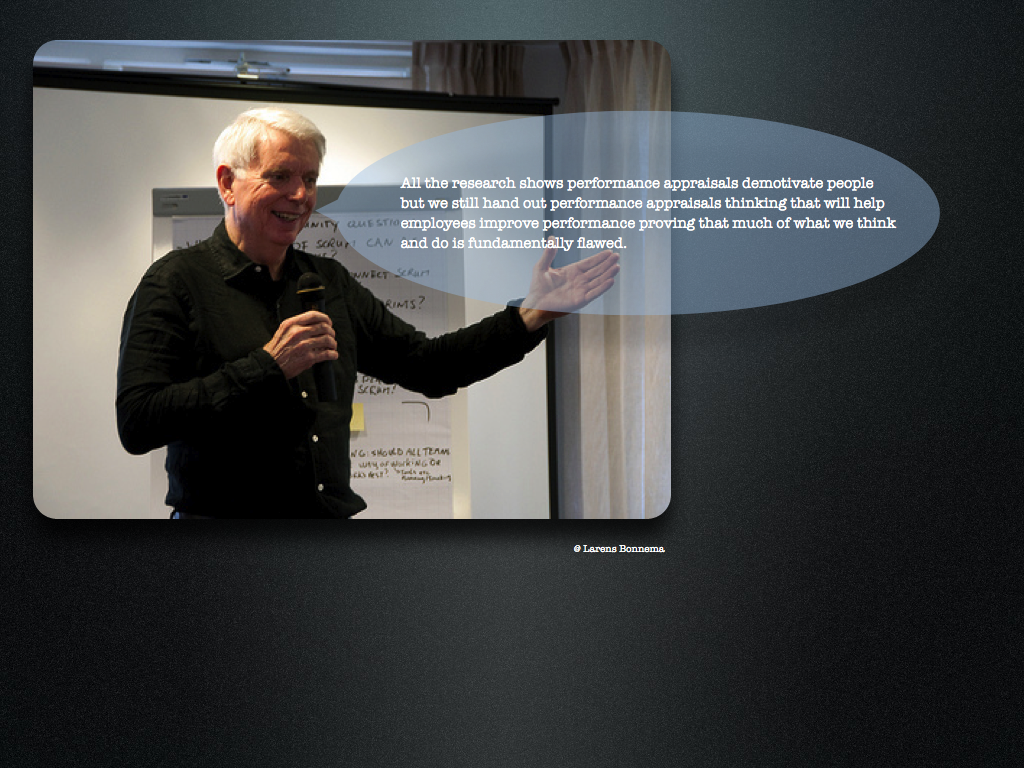
Som medarbetare kunde jag inte minnas ett enda sådant utvecklingssamtal som verkligen varit meningsfullt. Några hade möjligen varit harmlösa och trevliga samtal, men åtminstone ett par av dem hade varit direkt demotiverande och framförallt minskat mitt förtroende för samtalspartnern: min chef.
Continuous investment – Agil HR i praktiken
Finns nu i bokform på Leanpub
“Software developers…principal work is human communication to organize the users’ expressions of needs into formal procedure” Tom DeMarco, Peopleware
Detta är den första posten i en serie om agil HR “from the trenches”.
Del 1: Continuous investment
Del 2: Lägg ner utvecklingssamtalen
Del 3: Lön är rättvis ersättning – inte belöning
Del 4: Släng titlarna
Del 5: Ny kunskap – ett gemensamt ansvar, avsnitt 1
Del 6: Hitta rätt folk – släpp dem lös
Del 7: Kontor – låt teamen bestämma
Del 8: Tidredovisning – och andra onödiga system
Del 9: Bortom agile – unmanagement
Continuous investment
Våren 2011 slutade jag med utvecklingssamtal. Jag var då utvecklingschef på ett produktföretag och hade som alla andra chefer i Sverige (och den anglosaxiska världen) ett årligt återkommande samtal med var och en av mina medarbetare där jag – det ingår ju i själva grundidén om utvecklingssamtal – skulle hjälpa dem att utveckla sig i sitt arbete.
Min tanke var att göra som jag så ofta gjort när det handlar om (agil) organisationsförändring: gör ett experiment, mer eller mindre i det tysta, och se hur det går. Nu är just utvecklingssamtal lite svåra att lägga ner i det tysta, och då inte bara för att jag pratade om det på Agila Sverige det året – det var ju inte ett så diskret sätt att göra det på – och inte heller för att det ju blir uppenbart för de som blir av med den enda chansen på året att utvecklas (ironi), men framförallt eftersom det just är en av de ganska få väldefinierade processer som företag normal har. För att lägga ner utvecklingssamtal måste man (oftast) prata åtminstone med HR (och antagligen med ledningsgruppen, så var det i varje fall i mitt fall).
What questions does your Working Agreement answer?
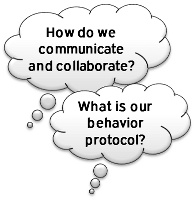 All teams have some sense of what is regarded as acceptable or good behavior within the team. Most people know that colleagues don’t appreciate it when you’re late. Perhaps you have a silent agreement regarding how you vote and make decisions. Some teams write down their behavior and collaborative “protocol” in a Working Agreement.
All teams have some sense of what is regarded as acceptable or good behavior within the team. Most people know that colleagues don’t appreciate it when you’re late. Perhaps you have a silent agreement regarding how you vote and make decisions. Some teams write down their behavior and collaborative “protocol” in a Working Agreement.
You might think that common sense covers it and writing it down seems silly, but surprise – common sense is subjective and you will have different opinions about things. Great! Let’s discuss and find our common ground.
The act of discussing it and writing it down is also a strong team building activity and forges relationships between team members. Any new team, or any team for that matter, could benefit greatly from a one-hour workshop. It could be part of a retrospective or a stand-alone meeting.
Team LiftOff with Market of Skills and Competence Matrix
Introduction
I got into agile development during the late 90s when I read Kent Beck’s book about extreme programming (XP). It was mostly the technical aspects of XP that attracted me; I liked test driven development and continuous integration and I understood the benefit of continuously reviewing the code by doing pair programming. It took some time for me to turn my attention to what I mainly focus on today, and what I see is a cornerstone of agile, teamwork. Product development is in most cases a complex endeavor where you need a high level of collaboration and teamwork to reach required outcome. To succeed you have to make sure the participants build on each others strength and knowledge, and where they see differences as something valuable and important. But it is not certain that all working groups ends up as a true team. As a team coach you need to pay attention to building the team at the beginning. This post will describe a few tools that I have used in order to form teams.
Commitment
As an Agile/Scrum coach I value commitment from the team at the top of my requirement or wish lists, even higher than Kaizen (Continuous Improvement).
So why is this so important?
Continue readingIs your team cross-functional enough?
Cross-functional team doesn’t mean everybody has to know everything – this seems to be a common misinterpretation though. Cross-functional just means that the team as a whole has all skills needed to build the product, and that each team member is willing to do more than just their own thing. Are you unsure if your
Continue readingAgile game – Pass the Cup!
In my favourite setup, this game demonstrates the power of learning by trying over "paralysis by analysis". But it also reveals productivity increase and group dynamics of your team.
